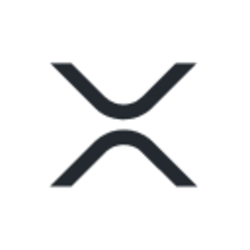- Ripple’s CTO, David Schwartz, aims to quell community fears regarding the impending launch of Ripple USD (RLUSD).
- The launch marks a significant development in the crypto sector, with mints and burns of RLUSD rapidly increasing, raising questions about XRP’s future relevance.
- Schwartz highlighted the unique role of XRP in transaction processing on the XRPL, emphasizing that every transaction will still require XRP.
The Ripple community has been assured that XRP remains integral to its operations even with the upcoming introduction of Ripple USD (RLUSD).
XRP’s Continued Importance Amidst New Developments
As Ripple advances its cross-border payment solutions, the impending launch of Ripple USD (RLUSD) has sparked thorough discussions regarding the future of XRP. With RLUSD’s innovation aiming to streamline transactions, concerns among XRP holders have escalated regarding whether XRP will maintain its pivotal role within Ripple’s ecosystem. However, Ripple’s CTO, David Schwartz, has taken to social media to assert that XRP’s significance remains unchanged, underpinning the company’s operations.
The Essential Role of XRP in the XRP Ledger
Diving into specifics, Schwartz clarified that XRP is foundational for transaction fees on the XRP Ledger (XRPL), asserting, “XRP is the only asset to pay transaction fees on XRPL.” He emphasized that each account on the XRPL must possess XRP to settle fees, making it indispensable in the network’s functioning. Furthermore, he pointed out that XRP operates without counterparties or jurisdictional limits, which shields it from counterparty risks such as freezes and clawbacks that may affect other assets.
Competitive Landscape and Challenges Ahead
While the integration of stablecoins like RLUSD offers significant advancements in transaction efficiency, Schwartz acknowledged potential challenges ahead. If stablecoins begin to deliver superior performance in fulfilling roles traditionally held by XRP, the latter’s prominence may diminish. This scenario poses a major question for the future of XRP as the environment evolves. Citing RLUSD’s potential for efficiency, Schwartz noted that enhancements in stablecoin utility should not undermine XRP’s core functionalities.
Reflection on Transaction Fees and Network Sustainability
Despite the potential for XRP’s value to be influenced by the emergence of RLUSD, Schwartz highlighted his viewpoint on transaction fees. He contended that increasing transaction fees to boost XRP’s scarcity is not a priority, as the Ripple network should primarily cater to its users rather than focusing solely on profit for current XRP holders. However, he acknowledged the impending introduction of smart contracts, which could inevitably lead to higher transaction fees on XRPL, creating a multi-faceted landscape for users and investors alike.
Conclusion
In summary, as Ripple prepares for the imminent launch of Ripple USD (RLUSD), the role of XRP remains critical. The insights provided by Schwartz clarify that while challenges exist, XRP will continue to serve as the backbone of transaction processing within the XRPL. With the potential introduction of smart contracts and new competitive offerings in the market, the XRP community must stay informed, assessing how these developments may shape the future landscape of digital finance.
